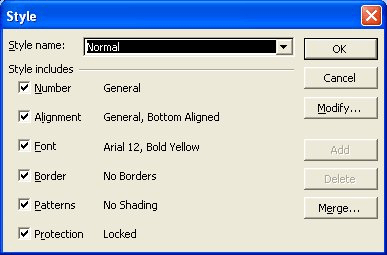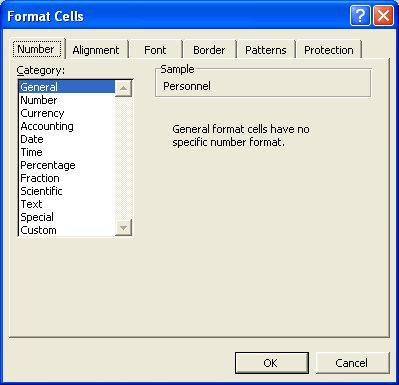Written by Allen Wyatt (last updated October 12, 2024)
This tip applies to Excel 97, 2000, 2002, and 2003
One of the great things about styles is that you can change them to suit the needs of the workbook you are developing. You can easily change an existing style in Excel by following these steps:

Figure 1. The Style dialog box.

Figure 2. The Format Cells dialog box.
ExcelTips is your source for cost-effective Microsoft Excel training. This tip (2682) applies to Microsoft Excel 97, 2000, 2002, and 2003.

Dive Deep into Macros! Make Excel do things you thought were impossible, discover techniques you won't find anywhere else, and create powerful automated reports. Bill Jelen and Tracy Syrstad help you instantly visualize information to make it actionable. You’ll find step-by-step instructions, real-world case studies, and 50 workbooks packed with examples and solutions. Check out Microsoft Excel 2019 VBA and Macros today!
Custom styles can be a great help in formatting a worksheet. You may, at some point, want to get rid of all the custom ...
Discover MoreStandardize the formatting in your Excel workbooks quickly and easily with the Style feature. Here's how to use it.
Discover MoreStyles can be a great help in making sure that the cells in a worksheet are formatted consistently. Here's how to apply ...
Discover MoreFREE SERVICE: Get tips like this every week in ExcelTips, a free productivity newsletter. Enter your address and click "Subscribe."
There are currently no comments for this tip. (Be the first to leave your comment—just use the simple form above!)
Got a version of Excel that uses the menu interface (Excel 97, Excel 2000, Excel 2002, or Excel 2003)? This site is for you! If you use a later version of Excel, visit our ExcelTips site focusing on the ribbon interface.
FREE SERVICE: Get tips like this every week in ExcelTips, a free productivity newsletter. Enter your address and click "Subscribe."
Copyright © 2025 Sharon Parq Associates, Inc.
Comments